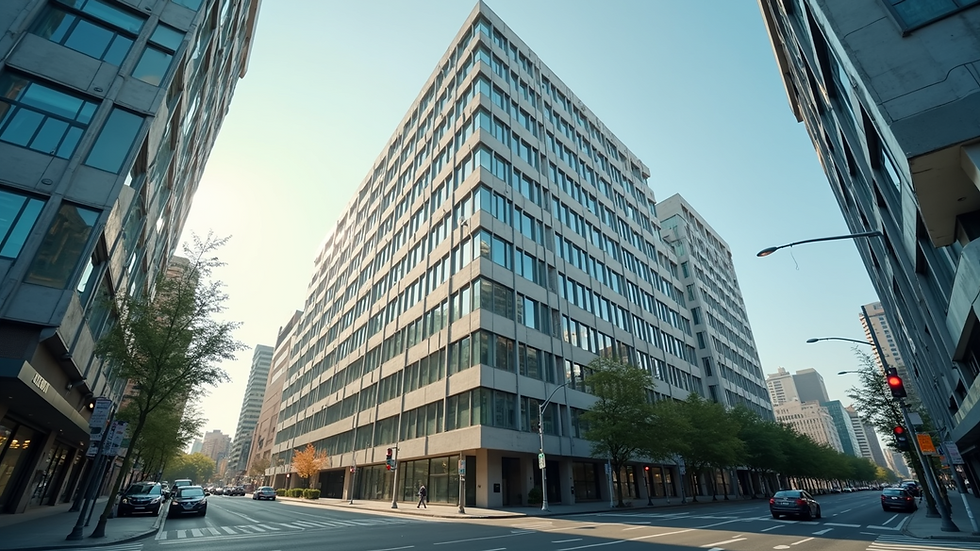Understanding the Basics of Residential and Commercial Construction
- Pawel Okurowski

- Jun 11
- 4 min read
Construction is a fundamental aspect of our society. Whether you're walking through your neighborhood or driving through downtown, every structure you see tells a story of design, labor, and planning. Understanding the basics of residential and commercial construction not only enriches your knowledge but also prepares you for potential projects, whether you’re building a home or investing in commercial property.
Construction Basics
At its core, construction involves transforming materials into structures. This transformation is guided by a series of regulations and standards to ensure safety, sustainability, and aesthetics. Residential construction refers to building homes and personal living spaces, while commercial construction pertains to structures serving businesses, such as offices, warehouses, or retail stores.
Before diving into the specifics of each type, it's essential to understand some common elements involved in construction. The process typically involves:
Planning and Design: This includes blueprints, selecting materials, and estimating costs.
Permits and Regulations: Obtaining necessary permits from local authorities to comply with building codes.
Site Preparation: Clearing and leveling land before breaking ground.
Construction: The actual building of structures using materials such as wood, concrete, steel, and glass.
Finishing Touches: Interior and exterior work to make the building livable or usable.

Understanding Residential Construction
Residential construction is about creating spaces for individuals and families. It encompasses various styles and types of homes, from single-family houses to multi-family buildings like apartments and condominiums. Here are some important aspects to understand:
Types of Residential Buildings
Single-Family Homes: Standalone structures designed for one family. These homes provide privacy and independence.
Multi-Family Homes: Buildings such as duplexes or apartment complexes that house multiple families. They are often more affordable and require shared resources.
Custom Homes: Unique designs specifically created for individual homeowners, reflecting personal tastes and lifestyles.
Modular and Prefabricated Homes: Built off-site and assembled on location. They offer speed and cost-effectiveness.
Key Considerations in Residential Construction
Local Regulations: Building codes differ by locality, impacting everything from zoning laws to height restrictions.
Sustainability: More homeowners are prioritizing energy-efficient designs and materials. This includes solar panels, insulation, and sustainable building materials.
Financing and Budgeting: Understanding costs is critical, from land acquisition to materials and labor. Keeping an achievable budget can streamline the entire process.

Understanding Commercial Construction
Commercial construction takes a different approach, focusing on structures that facilitate business activities. This sector covers a wide range of properties, including offices, retail spaces, and industrial facilities.
Types of Commercial Buildings
Office Buildings: Spaces designed for work, ranging from single-tenant to skyscrapers housing multiple tenants.
Retail Spaces: From big-box stores to boutique shops, these are designed to attract customers and facilitate shopping experiences.
Industrial Facilities: Warehouses and manufacturing plants that focus on production and distribution.
Specialty Buildings: Facilities like schools, hospitals, and places of worship serving specific community needs.
Key Considerations in Commercial Construction
Site Selection: Location is crucial for commercial projects. Proximity to transportation, customer traffic, and zoning regulations influence site choice.
Functional Needs: Commercial buildings must be designed to meet the needs of businesses, including technology integration, accessibility, and safety protocols.
Return on Investment (ROI): Developers must consider long-term profitability. This involves cost estimation, potential rental income, and property appreciation.

The Construction Process: A Breakdown
Understanding each phase of construction helps demystify the complexities involved in both residential and commercial projects. The process involves various stages:
1. Pre-Construction Phase
In this phase, planning takes center stage. It starts with:
Initial Consultation: Clients meeting with architects and construction managers to discuss ideas.
Design Development: Architects creating blueprints and designs based on client input.
Cost Estimation: Providing a detailed budget that includes all expected expenses.
2. Construction Phase
Once planning is complete, the actual construction begins. This involves:
Site Preparation: Clearing the land and laying a solid foundation. This step is crucial, as it sets the tone for the entire structure.
Building the Structure: Erecting walls, roofs, and floors. This process varies significantly between residential and commercial construction.
Installation of Systems: Including electrical, plumbing, and HVAC systems. Proper installation is vital for safety and functionality.
3. Post-Construction Phase
After the physical structure is complete, the focus shifts to finishing touches and preparing for occupancy:
Inspections and Permits: Final checks by local authorities to ensure compliance with regulations.
Landscaping and Exterior Finishing: Making the outside of the building aesthetically pleasing.
Interior Finishing: This final step includes flooring, painting, and cabinetry.
The Importance of Quality Control in Construction
Quality control plays a significant role in the construction industry. It refers to the processes in place to ensure that every aspect of a project meets established standards.
Hiring Qualified Professionals: Skilled workers and experienced contractors are vital for maintaining quality.
Regular Inspections: These ensure that all phases of construction meet safety and regulatory guidelines.
Material Selection: High-quality materials lead to safer, more durable structures.
Incorporating a strong quality control system can mitigate risks and enhance the overall success of construction projects.

Final Thoughts on Construction Basics
Building is more than just stacking materials; it's about creating functional spaces that enhance living and working experiences. By understanding the basics of residential and commercial construction, from the types of buildings to the processes involved, you can approach your next project with confidence.
Whether you are aiming to construct your dream home or invest in commercial real estate, knowing the fundamentals will help you make informed decisions and achieve desired outcomes. Many reputable companies provide comprehensive construction services to assist with all your needs.
Understanding these fundamentals can pave the way for successful projects in both residential and commercial sectors. Start your journey today by exploring further into the world of construction!




Comments